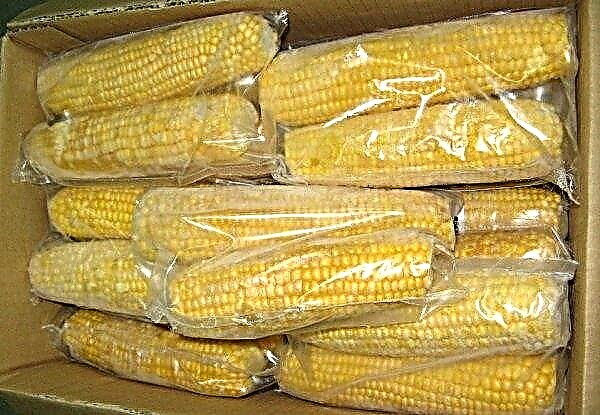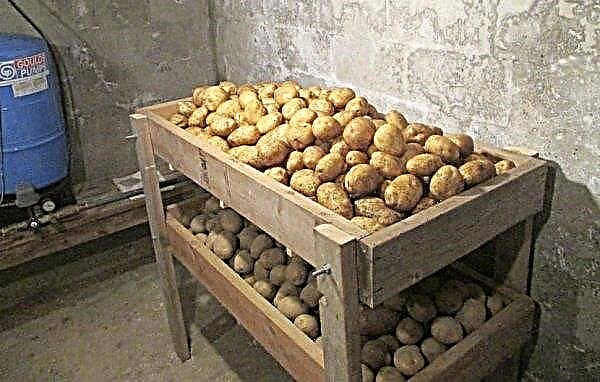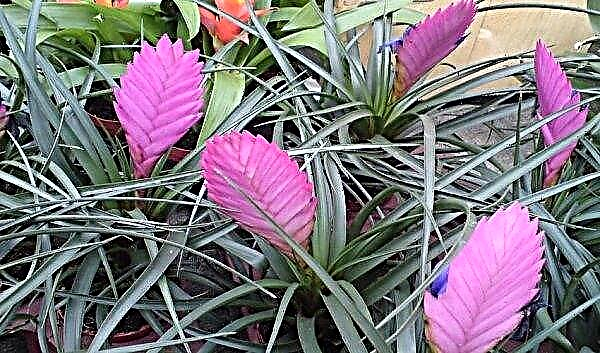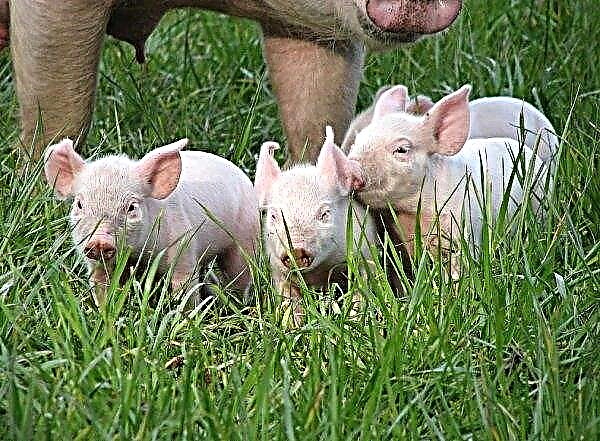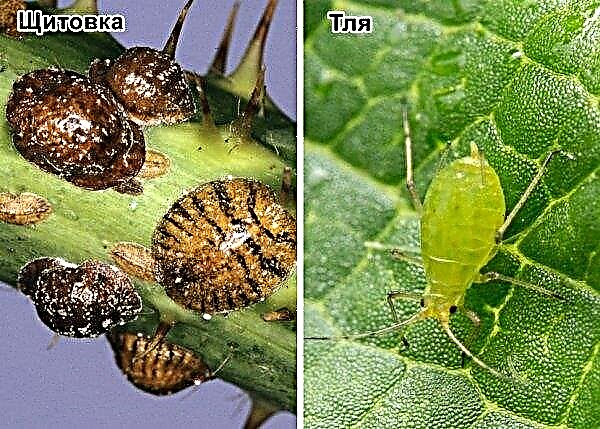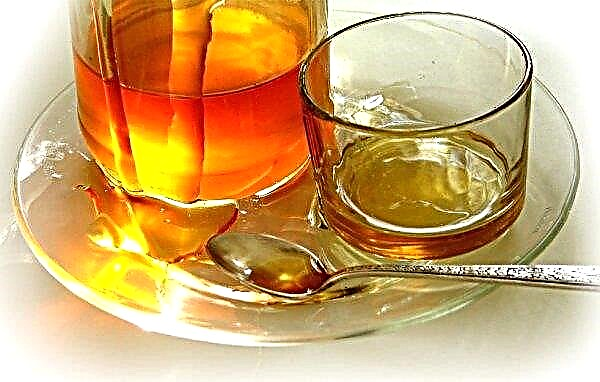Whiteflies and their larvae can significantly reduce the yield of crops grown in greenhouses, sucking juices from them and weakening. Often, against the background of their activity, diseases develop in damaged areas. Consider how to identify the appearance of whiteflies in time, and what measures should be taken.
Whitefly in a greenhouse: how to recognize signs of damage
It is very important to detect this pest in time and prevent it from multiplying.
Pest Description
Whiteflies are similar to very small white moths, although they actually belong to the order of half-winged, like aphids. They reach an average size of 1.5 mm, and their 4 wings look like powdered white flour. Females are slightly larger than males and can lay 50–300 eggs per cycle, each of which has a small stalk. First, these eggs are yellow in color, and then blacken, reaching a size of 0.3 mm. The larvae hatching from them undergo 4 stages of development, and develops in the imago within 18–30 days.
Did you know? In different cultures, the time for the transformation of larvae into adults varies - on cucumbers, it is about 18–19 days, and on tomatoes it reaches almost 30 days.
At the 1st stage, the larva moves and looks for a suitable place for feeding. When she sticks to the selected place, she begins to secrete a waxy secret that helps her gain a foothold. Then it molts and slightly decreases in size, losing the ability to move. At the 2nd stage, it is already similar to small scales. When the larva at the 3rd stage transforms into a nymph, it becomes greenish in color and becomes covered with a wax-like coating. At the 4th stage, she forms wings, other parts of her body and organs grow, and her nutrition ceases.
Nature of lesions
It is difficult to consider such a small insect and its larvae. Usually whiteflies themselves are noticed when they have already multiplied, and when shaken by flocks flies from plants.
Therefore, it is very important to pay attention to the following signs of the appearance of whiteflies in the greenhouse:
- leaves begin to curl;
- eggs or cocoons of these insects, small larvae, wax coating are visible on the back of the foliage;
- soot fungus, which appears as a result of the life of the larvae;
- small holes appear on the surface of the sheet;
- ovaries fall or blacken.

Pest Control Methods
There are many tools and methods to destroy whiteflies.
Folk remedies
These remedies are good when the insect has not yet multiplied and as a warning of the appearance.
Important! When spraying from pests, you should always pay attention to the underside of the leaves.
To remove whiteflies use such folk remedies:
- Ammonia. Take 35 ml of alcoholic ammonia solution (10%) from the pharmacy and dissolve in a 10-liter bucket. Spray the plants in the greenhouse every 3 days until the insect disappears. Such treatments can only be carried out before flowering or at its very beginning.
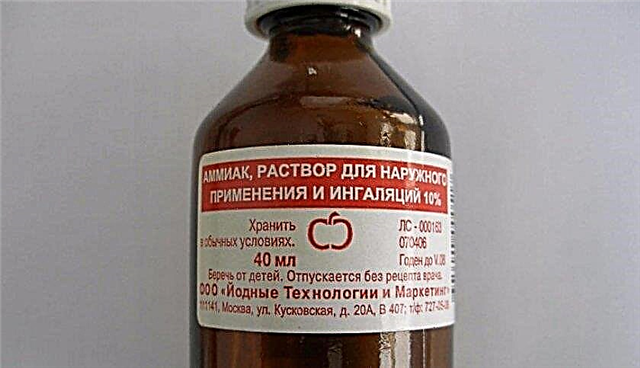
- Garlic infusion. Chopped 5-6 cloves of garlic is poured with a liter of water and incubated for 5 days. The resulting product is diluted at the rate of 10 g / 1 liter of water and all greenhouse plants and soil are sprayed with it. 3 sprayings are carried out once a week. Such a solution is also good for prophylactic use.
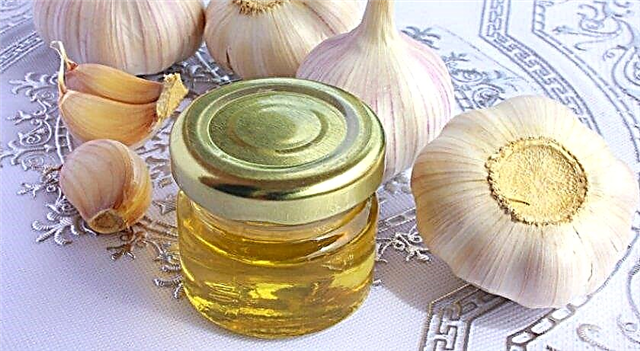
- Tobacco. Purchase and crush cheap cigarettes from one pack. Then pour them with a liter of boiling water and insist 5 days. Spray greenhouse crops every 3 days until the pest disappears. It is also useful to sprinkle the soil in greenhouse shelters with a mixture of ash and tobacco dust.
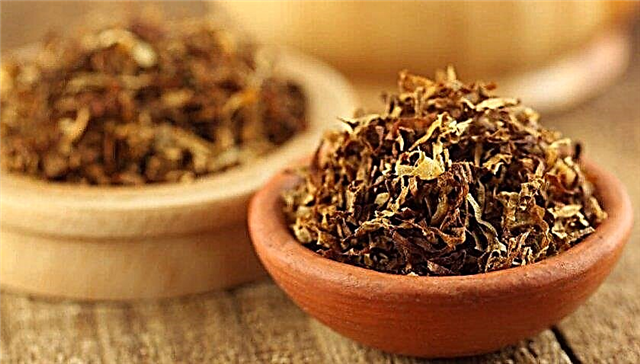
- Laundry soap. Make a solution from the calculation - 1 table. spoon of soap shavings in 1 liter of water and rub or spray them with plants. Soap wipes are good for small greenhouses or for indoor ornamental plants.
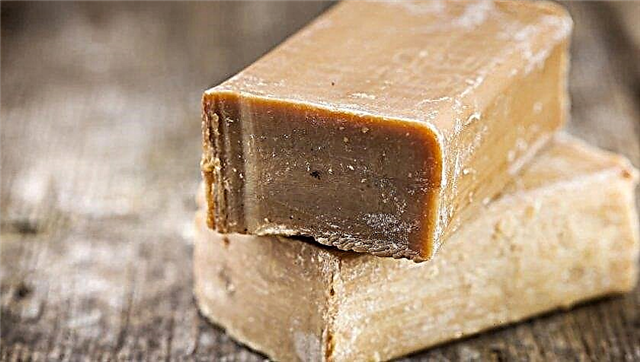
- Dandelion Flask. Grind 5-6 bushes of dandelions together with rhizomes and steam with a liter of boiling water. Insist until cool and strained to process greenhouse crops.

Did you know? There are effective biological products that help get rid of small insect pests. For example, the biological product “Verticillin” contains spores of a parasite fungus that destroys eggs and whitefly larvae, but is completely harmless to humans and animals.
Mechanical
Some gardeners do not like to use chemicals to control pests, and are willing to spend a lot of time to fight harmful insects. To this end, butterflies are knocked down with a jet of water, and then they clean the plant with a sponge moistened in a soap solution. Particular attention should be paid to the back of the leaves - this is where you can find eggs laid by insects, larvae and sticky coating. After that, digging the soil. Some fans with a large number of flying insects first collect them with a vacuum cleaner, and then take other measures. Another mechanical method for controlling whiteflies is the use of glue traps. Such devices are better to choose a bright yellow color. This color attracts insects very much. Glue traps can be purchased at any gardening store, or you can do it yourself. For this purpose, rectangular blanks are cut from plywood or other thick paper. Then they are painted yellow, and after the paint dries, an adhesive layer is applied.
Another mechanical method for controlling whiteflies is the use of glue traps. Such devices are better to choose a bright yellow color. This color attracts insects very much. Glue traps can be purchased at any gardening store, or you can do it yourself. For this purpose, rectangular blanks are cut from plywood or other thick paper. Then they are painted yellow, and after the paint dries, an adhesive layer is applied.
Honey with rosin, petroleum jelly, solid oil or glue from small rodents is suitable as an adhesive. Traps are attached to installed supports or to the roof, suspended by ropes at the top of the landing. As plants grow, traps rise higher. After the sticky rectangle is filled with pests, they are cleaned and the sticky layer is updated. To improve the effect of such devices, plants or bushes need to be shaken. Concerned pests fly up and fall into the trap, flying in a bright color.
Chemical
If the whitefly has expanded too much, then it is better to exterminate it with the help of chemical means, since there is already little time to save the crop. But it is worth considering that this pest quickly develops immunity from the effects of a particular chemical agent. Therefore, the drugs used should not be reused, they should be alternated with other means. Consider the most effective drugs:
Consider the most effective drugs:
- Karbofos. The solution for processing is prepared on the basis of the proportion of 10 ml per 10 liter bucket. Such a volume of liquid is enough to process 10 m² of planting area.
- Dichlorvos. It can be used against this pest for planting with cucumbers and tomatoes. But for greens (dill, parsley, onions, cilantro, salad), this tool can not be used. You can spray "Dichlorvos" before planting seedlings to reduce the risks of these insects. Processing is carried out 2 times with an interval of 14 days.
- Aktara. This insecticide contains a poison called thiamethoxam. It enters the sap of plants and the insects that feed on it die. “Aktoy” can be sprayed and watered. A solution for spraying is prepared in this way - 8 g per 10 liters of liquid. Such a volume is sufficient for processing 10 m². To irrigate, take 1 g of the drug per 10 l bucket of water.
- "Commander". Very effective chemical agent. They also carry out processing of land with landings. A solution for spraying is prepared on the basis of the recommended proportions - 5 ml of chemical means per 10 liters of a bucket of water. It is enough to carry out processing of 50-100 m². For watering, 2 g per 10 l of liquid is enough. This tool allows you to forget about whitefly for 2-4 weeks. According to the instructions, the fruits can be eaten as early as 5 days after processing.
Important! When using chemicals, it is necessary to use protective clothing, protect the respiratory system and eyes. Be sure to strictly adhere to the instructions and adhere to the recommended standards, since exceeding them can negatively affect the crop.
Preventative methods
Any problem is better to prevent than to solve later. To avoid the appearance of whiteflies in the greenhouse, gardeners recommend adhering to the following rules:
To avoid the appearance of whiteflies in the greenhouse, gardeners recommend adhering to the following rules:
- After collecting the entire crop in the autumn, it is necessary to carefully remove the remains of vegetation, dispose of them (burn) and dig the soil. The entire structure of the greenhouse is disinfected with lime and other disinfectants. All inventory is also treated with disinfectants.
- It is necessary to carry out soil disinfection. Typically, this procedure is carried out using copper sulfate (100 g / 5 l) not more than 1 time in 3 years.
- In the cold period, when frost occurs, it is advisable to let the greenhouse freeze. For this purpose, open all windows and doors. Snow must be removed. Thanks to frost, all the faces of insect pests that could calmly survive in the winter, hiding in the soil, will die.
- It is necessary to avoid dense plantings, that is, do not plant plants too close to each other.
- In the aisles, you can plant nasturtium, which emits substances unacceptable to the insect in the air.
- If possible, it is recommended to freeze the greenhouse well. If not, then smoke with tobacco smoke in the fall and spring.
- Attract biological enemies of whiteflies, eating small insects - ladybugs and lacewings. To attract them, marigolds are planted next to crops.
Did you know? Tobacco (cotton) whitefly is a quarantine object. The import of plants with the presence of these insects is prohibited on the territory of the Russian Federation by order of the Ministry of Agriculture of 2007. This pest is a carrier of about 100 viral diseases of plants and can cause 100% death of the crop.
During the period of growing plants, ventilate the greenhouse so that fresh air regularly arrives, there is no excess of moisture and high temperature. It is necessary to periodically inspect the plants of greenhouses for damage by a whitefly, and do not forget to look under the lower surface of the foliage. If it is detected, appropriate measures must be taken.






